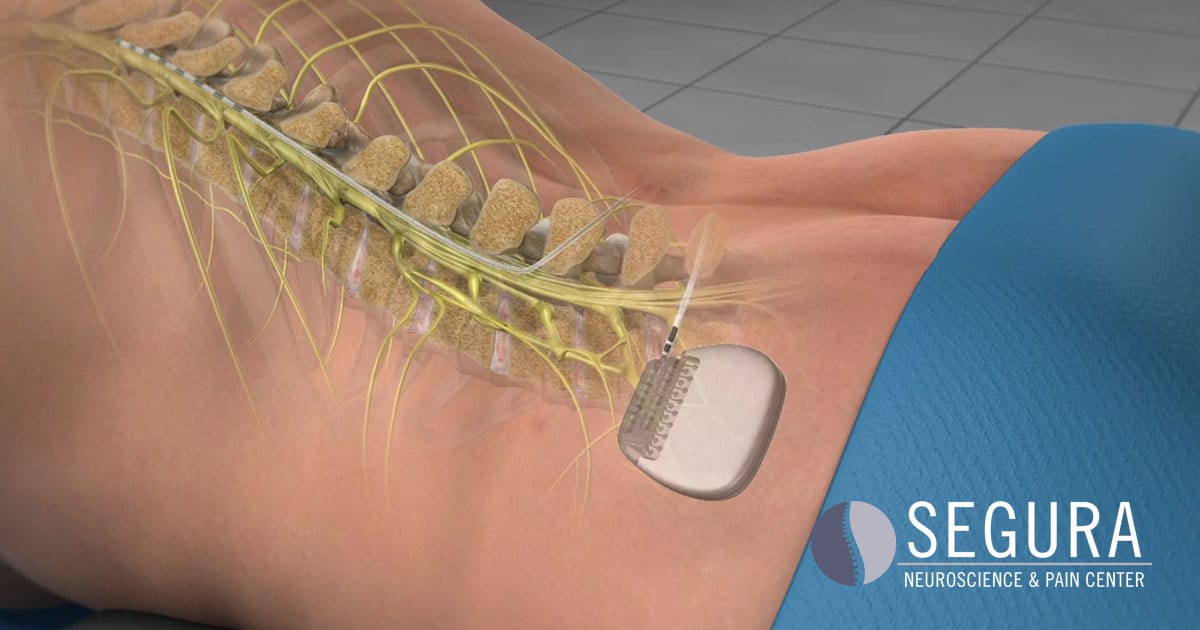A spinal cord stimulator (SCS) is a small device, similar to a pacemaker, that uses electrical impulses to relieve chronic pain of the back, arms, and legs. The device masks pain signals before they reach the brain.
There are a few types of SCS implants, but each is comprised of three main parts:
The doctor will determine the best spinal cord stimulator to suit your needs.
Who can benefit from an SCS implant?
Candidates for SCS include people who suffer from neuropathic pain which has not responded to more conservative treatments. Before being considered for spinal cord stimulation, the patient should meet the following qualifications:
Once determined a candidate for SCS, the physician may choose to first test the device for a trial period. The trial device can help the physician determine if the SCS successfully relieves the patient’s pain.
What conditions can be treated?
Spinal cord stimulation can be used to treat a wide array of painful conditions including cervical radiculopathy, lumbar radiculopathy, lumbar spinal stenosis, and shoulder pain. Other conditions include:
What does the procedure entail?
The patient is laid stomach-down and lightly sedated. With the aid of a real-time x-ray (fluoroscopy), one or more insulated wire leads are guided through an epidural needle, or a small incision, and into the epidural space - the area surrounding the spinal cord. The electrodes at the end of the lead deliver electrical pulses, which the nerves in the specified areas of the spinal cord. The patient will give feedback to allow the physician to place the stimulators in a position which best blocks the pain.
The leads are first connected to an external control to determine if the spinal cord stimulator effectively blocks the patient’s pain. If successful, the SCS device can be permanently implanted beneath the skin, either in the upper buttock or abdomen.
The implant is programmed, and can be modified, using an external, wireless remote control. The patient then has the freedom to turn the system off and on, adjust the intensity of the impulses, and switch between different pre-programmed settings.
What to expect after the procedure
Most patients can return home the same day or the morning following the spinal cord stimulator implant procedure. Your physician will program the pulse generator and give you written instructions before you go home. After surgery patients typically experience mild discomfort and swelling at the incision site. You should not bend, twist, lift, or reach for about 6 weeks after surgery, as these actions could cause the lead wires to come out of place. Do not drive, drink alcohol, or carry out strenuous activity.

